Central Auckland > Public Hospital Services > Health New Zealand | Te Whatu Ora - Te Toka Tumai Auckland >
Cardiology | Auckland | Te Toka Tumai
Public Service, Cardiology
Today
Auckland City Hospital
8:30 AM to 5:30 PM.
Description
The cardiology team at Auckland City Hospital has an international reputation for cardiology and cardiothoracic surgery. We have continued to be at the leading edge of innovation since the 1950s.
Cardiology is the specialty within medicine that looks at the heart and blood vessels. Your heart consists of four chambers, which are responsible for pumping blood to your lungs and then the rest of your body. The study of the heart includes the heart muscle (the myocardium), the valves within the heart between the chambers, the blood vessels that supply blood (and hence oxygen and nutrients) to the heart muscle, and the electrical system of the heart which is what controls the heart rate.
Visit Healthify for general information on cardiology conditions.
Consultants
-

Dr Natasha Altman
Cardiologist
-

Dr Peter Barr
Interventional Cardiologist
-
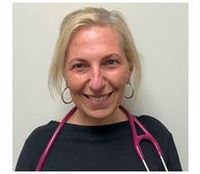
Dr Jocelyne Benatar
MOSS Cardiology
-

Dr Sergej Cicovic
Interventional Cardiologist
-

Prof Rob Doughty
Cardiologist
-

Dr Nicola Edwards
Cardiologist
-

Dr Shakiya Ershad
Cardiologist
-

Dr Sarah Fitzsimons
Cardiologist
-

Dr Ivor Gerber
Cardiologist
-

Dr Jesus Gonzalez Leon
Cardiologist
-

Dr Margaret Hood
Cardiologist
-

Dr Shaw (Anthony) Kueh
Cardiologist
-
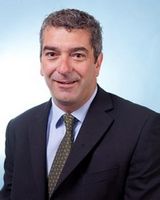
Assoc Prof Nigel Lever
Cardiologist
-

Dr Khang Li Looi
Cardiologist
-

Dr Boris Lowe
Cardiologist
-

Dr Andrew Martin
Cardiologist
-

Dr Lene Nielsen
Cardiologist General Echo/Imaging
-

Dr Matthew O'Connor
Consultant Electrophysiologist
-

Dr Christopher Occleshaw
Cardiac Radiologist
-
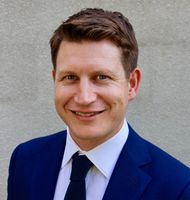
Dr Thomas Pasley
Cardiologist
-

Dr Jeffrey Sebastian
Cardiologist
-

Dr Jithendra Somaratne
Interventional Cardiologist
-

Dr Fiona Stewart
Cardiologist
-

Prof Ralph Stewart
Cardiologist
-

Dr Michael Stubbs
Cardiologist
-

Dr Niels van Pelt
Cardiologist
-

Dr Karsten Veien
Interventional Cardiologist
-

Dr Cara Wasywich
Cardiologist - Service Clinical Director
-
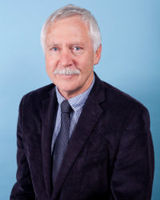
Dr Mark Webster
Cardiologist
-

Dr Miriam Wheeler
Cardiologist
-
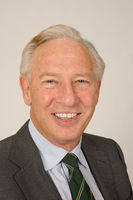
Prof Harvey White
Cardiologist
-

Dr Jonathon White
Cardiologist
Referral Expectations
What happens next?
Hours
Auckland City Hospital
8:30 AM to 5:30 PM.
| Mon – Fri | 8:30 AM – 5:30 PM |
|---|
Procedures / Treatments
An ECG is a recording of your heart's electrical activity. Electrode patches are attached to your skin to measure the electrical impulses given off by your heart. The result is a trace that can be read by a doctor. It can give information of previous heart attacks or problems with the heart rhythm. Depending on your history, examination and ECG, you may go on to have other tests.
An ECG is a recording of your heart's electrical activity. Electrode patches are attached to your skin to measure the electrical impulses given off by your heart. The result is a trace that can be read by a doctor. It can give information of previous heart attacks or problems with the heart rhythm. Depending on your history, examination and ECG, you may go on to have other tests.
An ECG done when you are resting may be normal even when you have cardiovascular disease. During an exercise ECG the heart is made to work harder so that if there is any narrowing of the blood vessels resulting in poor blood supply it is more likely to be picked up on the tracing as your heart goes faster. For this test you have to work harder which involves walking on a treadmill while your heart is monitored. The treadmill gets faster with time but you can stop at anytime. This test is supervised and interpreted by a doctor as you go. This test is used to see if you have any evidence of cardiovascular disease and can give the doctor some idea as to how severe it might be so as to direct further tests and possible treatment.
An ECG done when you are resting may be normal even when you have cardiovascular disease. During an exercise ECG the heart is made to work harder so that if there is any narrowing of the blood vessels resulting in poor blood supply it is more likely to be picked up on the tracing as your heart goes faster. For this test you have to work harder which involves walking on a treadmill while your heart is monitored. The treadmill gets faster with time but you can stop at anytime. This test is supervised and interpreted by a doctor as you go. This test is used to see if you have any evidence of cardiovascular disease and can give the doctor some idea as to how severe it might be so as to direct further tests and possible treatment.
An ECG done when you are resting may be normal even when you have cardiovascular disease. During an exercise ECG the heart is made to work harder so that if there is any narrowing of the blood vessels resulting in poor blood supply it is more likely to be picked up on the tracing as your heart goes faster. For this test you have to work harder which involves walking on a treadmill while your heart is monitored. The treadmill gets faster with time but you can stop at anytime. This test is supervised and interpreted by a doctor as you go. This test is used to see if you have any evidence of cardiovascular disease and can give the doctor some idea as to how severe it might be so as to direct further tests and possible treatment.
You are likely to have blood tests done before coming to clinic to check your cholesterol level and looking for evidence of diabetes. These blood tests are done "fasting" which means you have the blood taken in the morning on an empty stomach before breakfast.
You are likely to have blood tests done before coming to clinic to check your cholesterol level and looking for evidence of diabetes. These blood tests are done "fasting" which means you have the blood taken in the morning on an empty stomach before breakfast.
Echocardiography is also referred to as cardiac ultrasound. This test is performed by a specially trained technician. It is a test that uses high frequency sound waves to generate pictures of your heart. During the test, you generally lie on your back; gel is applied to your skin to increase the conductivity of the ultrasound waves. A technician then moves the small, plastic transducer over your chest. The test is painless and can take from 10 minutes to an hour. The machine then analyses the information and develops images of your heart. These images are seen on a monitor. This is referred to as an echocardiogram. Echocardiography can help in the diagnosis of many heart problems including cardiovascular disease, previous heart attacks, valve disorders, weakened heart muscle, holes between heart chambers, fluid around the heart (pericardial effusion). If doctors are looking for evidence of coronary artery disease they may perform variations of this test which include: Exercise echocardiography - a technique used to view how your heart works under stress. It compares how your heart works when stressed by exercise versus when it is at rest. The ultrasound is conducted before you exercise and immediately after you stop. Either a stationary bicycle or standard treadmill is used. Dobutamine stress echocardiography - if you’re unable to exercise for the above test, you might be given medication to simulate the effects of exercise. During this test, an echocardiogram initially is performed when you’re at rest. Then dobutamine is given to you via a needle into a vein in your arm. Its effect is to make your heart work harder and faster just like with exercise. After it has taken effect, the echocardiogram is repeated. The effect wears off very quickly.
Echocardiography is also referred to as cardiac ultrasound. This test is performed by a specially trained technician. It is a test that uses high frequency sound waves to generate pictures of your heart. During the test, you generally lie on your back; gel is applied to your skin to increase the conductivity of the ultrasound waves. A technician then moves the small, plastic transducer over your chest. The test is painless and can take from 10 minutes to an hour. The machine then analyses the information and develops images of your heart. These images are seen on a monitor. This is referred to as an echocardiogram. Echocardiography can help in the diagnosis of many heart problems including cardiovascular disease, previous heart attacks, valve disorders, weakened heart muscle, holes between heart chambers, fluid around the heart (pericardial effusion). If doctors are looking for evidence of coronary artery disease they may perform variations of this test which include: Exercise echocardiography - a technique used to view how your heart works under stress. It compares how your heart works when stressed by exercise versus when it is at rest. The ultrasound is conducted before you exercise and immediately after you stop. Either a stationary bicycle or standard treadmill is used. Dobutamine stress echocardiography - if you’re unable to exercise for the above test, you might be given medication to simulate the effects of exercise. During this test, an echocardiogram initially is performed when you’re at rest. Then dobutamine is given to you via a needle into a vein in your arm. Its effect is to make your heart work harder and faster just like with exercise. After it has taken effect, the echocardiogram is repeated. The effect wears off very quickly.
- Exercise echocardiography - a technique used to view how your heart works under stress. It compares how your heart works when stressed by exercise versus when it is at rest. The ultrasound is conducted before you exercise and immediately after you stop. Either a stationary bicycle or standard treadmill is used.
- Dobutamine stress echocardiography - if you’re unable to exercise for the above test, you might be given medication to simulate the effects of exercise. During this test, an echocardiogram initially is performed when you’re at rest. Then dobutamine is given to you via a needle into a vein in your arm. Its effect is to make your heart work harder and faster just like with exercise. After it has taken effect, the echocardiogram is repeated. The effect wears off very quickly.
This test is performed by a cardiologist in a sterile operating theatre environment. Most people will need to have routine tests before the procedure. These tests may require separate appointments and are usually planned the day before or the day of the procedure. You will be asked not to eat or drink after midnight the evening before the procedure. You are not given a general anaesthetic but may have some medication to relax you if needed. Local anaesthetic is put into an area of skin in your wrist (usually) or to the side of your groin (occasionally). A needle and then tube are fed into an artery in the groin and advanced through the blood vessels to the heart. Dye is then injected so that the heart and blood vessels can be seen on X-ray. X-rays and measurements are then taken giving the doctors information about the state of your heart and the exact nature of any narrowed blood vessels. This allows them to plan the best form of treatment to prevent heart attacks and control any symptoms you may have. After the procedure you will have a bandage on your wrist (or if the groin has been used for access you will need to lay flat without bending your legs while the groin sheath is in place. After the groin sheath is removed, you must lay flat for a period of time to prevent bleeding).
This test is performed by a cardiologist in a sterile operating theatre environment. Most people will need to have routine tests before the procedure. These tests may require separate appointments and are usually planned the day before or the day of the procedure. You will be asked not to eat or drink after midnight the evening before the procedure. You are not given a general anaesthetic but may have some medication to relax you if needed. Local anaesthetic is put into an area of skin in your wrist (usually) or to the side of your groin (occasionally). A needle and then tube are fed into an artery in the groin and advanced through the blood vessels to the heart. Dye is then injected so that the heart and blood vessels can be seen on X-ray. X-rays and measurements are then taken giving the doctors information about the state of your heart and the exact nature of any narrowed blood vessels. This allows them to plan the best form of treatment to prevent heart attacks and control any symptoms you may have. After the procedure you will have a bandage on your wrist (or if the groin has been used for access you will need to lay flat without bending your legs while the groin sheath is in place. After the groin sheath is removed, you must lay flat for a period of time to prevent bleeding).
You are not given a general anaesthetic but may have some medication to relax you if needed. Local anaesthetic is put into an area of skin in your wrist (usually) or to the side of your groin (occasionally). A needle and then tube are fed into an artery in the groin and advanced through the blood vessels to the heart. Dye is then injected so that the heart and blood vessels can be seen on X-ray. X-rays and measurements are then taken giving the doctors information about the state of your heart and the exact nature of any narrowed blood vessels. This allows them to plan the best form of treatment to prevent heart attacks and control any symptoms you may have.
This refers to narrowing of the arteries that supply blood to the heart muscle. The heart, like all other organs in the body, needs a constant supply of oxygen and energy. Narrowed arteries are unable to keep up with the demand needed to supply the heart muscle with blood. This can cause damage to the heart muscle if prolonged. The most common symptom of this problem is chest pain that occurs when you exert yourself (angina). Typical angina chest pain is a heavy sensation in your chest associated with shortness of breath. It sometimes radiates to your arms and can make you feel like being sick, dizzy or sweaty. Not everybody experiences the same sensation and any one of those symptoms can represent angina. If your GP thinks you may have angina they will refer you for an assessment to plan treatment. Heart Attack (Myocardial Infarction) If an attack of angina lasts for more than 20 minutes then you may be having a heart attack. This is when a piece of the heart muscle has been deprived of oxygen for so long that it can die, resulting in permanent damage to your heart and in some cases death. There are treatments available in hospital that can prevent heart attacks and save lives so if you have chest pain or symptoms of angina that last for more than 20 minutes you should call an ambulance and go to hospital as soon as possible. Am I Likely to Have Cardiovascular Disease? There are several risk factors that are scientifically proven to be associated with this disease. However, even if you don’t have any of the following it could still happen to you. You are more likely to have cardiovascular disease if you have any of the following: are or have been a smoker diabetes high blood pressure high cholesterol a family history of the disease are older (your risk increases as you get older). Treatment consists of medications to protect the heart and its blood vessels. These include aspirin which makes the blood less sticky and prone to clots, medication to lower your cholesterol (even if it isn’t very high this is still helpful), medication to make your heart go slower and to open the blood vessels. You will be given a nitro lingual spray to carry with you with instructions of what to do if you have angina. You will be given advice on diet changes that can protect the heart as well as stop smoking programs. If you have had a heart attack you will be offered cardiac rehabilitation classes with a trained physiotherapist. Depending on test results, you may have procedures offered to surgically correct the narrowed blood vessels. The Cardiology Department and your GP often share follow-up for this condition.
This refers to narrowing of the arteries that supply blood to the heart muscle. The heart, like all other organs in the body, needs a constant supply of oxygen and energy. Narrowed arteries are unable to keep up with the demand needed to supply the heart muscle with blood. This can cause damage to the heart muscle if prolonged. The most common symptom of this problem is chest pain that occurs when you exert yourself (angina). Typical angina chest pain is a heavy sensation in your chest associated with shortness of breath. It sometimes radiates to your arms and can make you feel like being sick, dizzy or sweaty. Not everybody experiences the same sensation and any one of those symptoms can represent angina. If your GP thinks you may have angina they will refer you for an assessment to plan treatment. Heart Attack (Myocardial Infarction) If an attack of angina lasts for more than 20 minutes then you may be having a heart attack. This is when a piece of the heart muscle has been deprived of oxygen for so long that it can die, resulting in permanent damage to your heart and in some cases death. There are treatments available in hospital that can prevent heart attacks and save lives so if you have chest pain or symptoms of angina that last for more than 20 minutes you should call an ambulance and go to hospital as soon as possible. Am I Likely to Have Cardiovascular Disease? There are several risk factors that are scientifically proven to be associated with this disease. However, even if you don’t have any of the following it could still happen to you. You are more likely to have cardiovascular disease if you have any of the following: are or have been a smoker diabetes high blood pressure high cholesterol a family history of the disease are older (your risk increases as you get older). Treatment consists of medications to protect the heart and its blood vessels. These include aspirin which makes the blood less sticky and prone to clots, medication to lower your cholesterol (even if it isn’t very high this is still helpful), medication to make your heart go slower and to open the blood vessels. You will be given a nitro lingual spray to carry with you with instructions of what to do if you have angina. You will be given advice on diet changes that can protect the heart as well as stop smoking programs. If you have had a heart attack you will be offered cardiac rehabilitation classes with a trained physiotherapist. Depending on test results, you may have procedures offered to surgically correct the narrowed blood vessels. The Cardiology Department and your GP often share follow-up for this condition.
Am I Likely to Have Cardiovascular Disease?
- are or have been a smoker
- diabetes
- high blood pressure
- high cholesterol
- a family history of the disease
- are older (your risk increases as you get older).
You will be given advice on diet changes that can protect the heart as well as stop smoking programs.
Depending on test results, you may have procedures offered to surgically correct the narrowed blood vessels.
The Cardiology Department and your GP often share follow-up for this condition.
Heart failure refers to the heart failing to pump efficiently. There are many diseases that cause this including cardiovascular disease, high blood pressure, viral infections, alcohol, and diseases affecting the valves of the heart. When the heart is inefficient, a number of symptoms occur depending on the cause and severity of the condition. The main symptoms are tiredness, breathlessness on exertion or lying flat, and ankle swelling. Doctors often refer to oedema, which means fluid retention usually in your feet or lungs as a result of the heart not pumping efficiently. Tests looking for possible causes of heart failure include: · Chest X-ray · Electrocardiogram (ECG) · Echocardiogram (Cardiac ultrasound) · Angiogram. Treatment You are likely to have several medications over time, started and monitored by your cardiologist/Heart Failure Nurse Specialist (HFNS) and GP. These include medication to control the amount of fluid that builds up (diuretics), medication to protect your heart and slow it down as well as to thin your blood. Advice and written material on fluid, salt restriction, compliance with prescribed medication as well as support on self-care management will be given by the HFNS on an individualised basis at the Heart Failure Clinic situated on the Greenlane site. To talk to one of the three Heart Failure Nurse Specialists please phone the Hospital Operator ( 307 4949 ) and ask for the on call Heart Failure Nurse or phone 021 748 355. The cardiologist/HFNS and your GP usually share follow-up for this condition. You may be referred to a dietitian for individual dietary assessment and/or an exercise specialist for an individualised exercise programme. An Information Booklet on Heart Failure is available from the National Heart Foundation ph (09) 571 9191. Staying Well With Heart Failure (PDF, 2.4 MB) National Heart Foundation Guide.
Heart failure refers to the heart failing to pump efficiently. There are many diseases that cause this including cardiovascular disease, high blood pressure, viral infections, alcohol, and diseases affecting the valves of the heart. When the heart is inefficient, a number of symptoms occur depending on the cause and severity of the condition. The main symptoms are tiredness, breathlessness on exertion or lying flat, and ankle swelling. Doctors often refer to oedema, which means fluid retention usually in your feet or lungs as a result of the heart not pumping efficiently. Tests looking for possible causes of heart failure include: · Chest X-ray · Electrocardiogram (ECG) · Echocardiogram (Cardiac ultrasound) · Angiogram. Treatment You are likely to have several medications over time, started and monitored by your cardiologist/Heart Failure Nurse Specialist (HFNS) and GP. These include medication to control the amount of fluid that builds up (diuretics), medication to protect your heart and slow it down as well as to thin your blood. Advice and written material on fluid, salt restriction, compliance with prescribed medication as well as support on self-care management will be given by the HFNS on an individualised basis at the Heart Failure Clinic situated on the Greenlane site. To talk to one of the three Heart Failure Nurse Specialists please phone the Hospital Operator ( 307 4949 ) and ask for the on call Heart Failure Nurse or phone 021 748 355. The cardiologist/HFNS and your GP usually share follow-up for this condition. You may be referred to a dietitian for individual dietary assessment and/or an exercise specialist for an individualised exercise programme. An Information Booklet on Heart Failure is available from the National Heart Foundation ph (09) 571 9191. Staying Well With Heart Failure (PDF, 2.4 MB) National Heart Foundation Guide.
-
Staying Well With Heart Failure
(PDF, 2.4 MB)
National Heart Foundation Guide.
Your heart rate is controlled by a complex electrical system within the heart muscle which drives it to go faster when you exert yourself and slower when you rest. A number of conditions can affect the heart rate or rhythm. Heart rate simply refers to how fast your heart is beating. Heart rhythm refers to the electrical source that is driving the heart rate and whether or not it is regular or irregular., As some types of arrhythmias can cause you to faint without warning, your doctor may restrict your driving until the condition is controlled., Some common terms, Sinus rhythm is the normal rhythm Arrhythmia means abnormal rhythm Fibrillation means irregular rhythm or quivering of one part of the heart Bradycardia means slow heart rate Tachycardia means fast heart rate Paroxysmal means the arrhythmia comes and goes, Tachycardia, The most common of these is atrial fibrillation. This is where your heart rhythm is irregular and often too fast. Symptoms include fatigue, palpitations (where you are aware of your heart racing or pounding), dizziness and breathlessness., Other tachycardias include supraventricular tachycardia (SVT) or ventricular tachycardia (VT). These have similar symptoms as atrial fibrillation but can also cause you to lose consciousness (faint)., Bradycardia, The most common form of this is called heart block. This is because messages from the electrical generator of the heart don't get through efficiently to the rest of the heart and hence it goes very slowly or can pause. Symptoms of the heart going too slowly include feeling tired, breathless or fainting., Tests, Tests to diagnose what sort of arrhythmia you have include, an electrocardiogram (ECG). This trace of the heart's electrical activity gives the diagnosis of the source of the arrhythmia. This is often normal at rest and more extensive testing is needed to try and catch the arrhythmia especially if it is intermittent. an Ambulatory ECG. This can be performed with a Holter monitor which monitors your heart for rhythm abnormalities during normal activity for an uninterrupted 24-hour period. During the test, electrodes attached to your chest are connected to a portable recorder - about the size of a paperback book - that's attached to your belt or hung from a shoulder strap. Another form of ambulatory ECG test is an Event recorder which covers 1-2 weeks. You wear a monitor (much smaller than a Holter monitor) and if you have any symptoms, such as dizziness, you press a button on a recording device which saves the recording of your heart rhythm made in the minutes leading up to and during your symptoms. Because you can wear this for a longer period of time it has a higher rate of catching your abnormal rhythm., Treatment, Most treatments for tachycardias consist of medication to stop the abnormal rhythm or make it slower if and when it occurs. Atrial fibrillation, if you have other problems, can increase your risk of stroke so blood-thinning medication is often used as well., If you have bradycardia you may be referred to the surgeons for a pacemaker. This is a small operation where a battery powered device is placed under the skin with wires that lead to your heart and provide it with electrical stimulation to prevent it from going too slow. You can't feel it doing this but will be aware of a small flat lump under your skin just below your collar bone.
Your heart rate is controlled by a complex electrical system within the heart muscle which drives it to go faster when you exert yourself and slower when you rest. A number of conditions can affect the heart rate or rhythm. Heart rate simply refers to how fast your heart is beating. Heart rhythm refers to the electrical source that is driving the heart rate and whether or not it is regular or irregular., As some types of arrhythmias can cause you to faint without warning, your doctor may restrict your driving until the condition is controlled., Some common terms, Sinus rhythm is the normal rhythm Arrhythmia means abnormal rhythm Fibrillation means irregular rhythm or quivering of one part of the heart Bradycardia means slow heart rate Tachycardia means fast heart rate Paroxysmal means the arrhythmia comes and goes, Tachycardia, The most common of these is atrial fibrillation. This is where your heart rhythm is irregular and often too fast. Symptoms include fatigue, palpitations (where you are aware of your heart racing or pounding), dizziness and breathlessness., Other tachycardias include supraventricular tachycardia (SVT) or ventricular tachycardia (VT). These have similar symptoms as atrial fibrillation but can also cause you to lose consciousness (faint)., Bradycardia, The most common form of this is called heart block. This is because messages from the electrical generator of the heart don't get through efficiently to the rest of the heart and hence it goes very slowly or can pause. Symptoms of the heart going too slowly include feeling tired, breathless or fainting., Tests, Tests to diagnose what sort of arrhythmia you have include, an electrocardiogram (ECG). This trace of the heart's electrical activity gives the diagnosis of the source of the arrhythmia. This is often normal at rest and more extensive testing is needed to try and catch the arrhythmia especially if it is intermittent. an Ambulatory ECG. This can be performed with a Holter monitor which monitors your heart for rhythm abnormalities during normal activity for an uninterrupted 24-hour period. During the test, electrodes attached to your chest are connected to a portable recorder - about the size of a paperback book - that's attached to your belt or hung from a shoulder strap. Another form of ambulatory ECG test is an Event recorder which covers 1-2 weeks. You wear a monitor (much smaller than a Holter monitor) and if you have any symptoms, such as dizziness, you press a button on a recording device which saves the recording of your heart rhythm made in the minutes leading up to and during your symptoms. Because you can wear this for a longer period of time it has a higher rate of catching your abnormal rhythm., Treatment, Most treatments for tachycardias consist of medication to stop the abnormal rhythm or make it slower if and when it occurs. Atrial fibrillation, if you have other problems, can increase your risk of stroke so blood-thinning medication is often used as well., If you have bradycardia you may be referred to the surgeons for a pacemaker. This is a small operation where a battery powered device is placed under the skin with wires that lead to your heart and provide it with electrical stimulation to prevent it from going too slow. You can't feel it doing this but will be aware of a small flat lump under your skin just below your collar bone.
- Your heart rate is controlled by a complex electrical system within the heart muscle which drives it to go faster when you exert yourself and slower when you rest. A number of conditions can affect the heart rate or rhythm. Heart rate simply refers to how fast your heart is beating. Heart rhythm refers to the electrical source that is driving the heart rate and whether or not it is regular or irregular.
- Sinus rhythm is the normal rhythm
- Arrhythmia means abnormal rhythm
- Fibrillation means irregular rhythm or quivering of one part of the heart
- Bradycardia means slow heart rate
- Tachycardia means fast heart rate
- Paroxysmal means the arrhythmia comes and goes
- an electrocardiogram (ECG). This trace of the heart's electrical activity gives the diagnosis of the source of the arrhythmia. This is often normal at rest and more extensive testing is needed to try and catch the arrhythmia especially if it is intermittent.
- an Ambulatory ECG. This can be performed with a Holter monitor which monitors your heart for rhythm abnormalities during normal activity for an uninterrupted 24-hour period. During the test, electrodes attached to your chest are connected to a portable recorder - about the size of a paperback book - that's attached to your belt or hung from a shoulder strap. Another form of ambulatory ECG test is an Event recorder which covers 1-2 weeks. You wear a monitor (much smaller than a Holter monitor) and if you have any symptoms, such as dizziness, you press a button on a recording device which saves the recording of your heart rhythm made in the minutes leading up to and during your symptoms. Because you can wear this for a longer period of time it has a higher rate of catching your abnormal rhythm.
Your heart consists of 4 chambers that receive and send blood to the lungs and body. Disorders affecting valves can either cause stenosis (a narrowing) or regurgitation (leakage after the valve has closed). Depending on what valve is involved and how severe the damage is it may result in symptoms of heart failure (see above),as it makes the heart pump inefficiently. Suspicion of a heart valve problem is usually picked up by your doctor when they listen to your heart and hear a murmur. A murmur is heard with the stethoscope and is turbulence of blood flow that occurs through a narrowed or leaky valve. Not all heart murmurs mean serious problems but are best investigated further. The echocardiogram is the main test to diagnose what valve is involved and how severe it is. Treatment depends on the type and severity of the valve lesion.You may simply be monitored over years to see if anything changes. Some conditions require medication to thin the blood or treat any complicating heart problems. You may be referred to a heart surgeon for consideration of a valve replacement or dilatation of a narrowed valve.
Your heart consists of 4 chambers that receive and send blood to the lungs and body. Disorders affecting valves can either cause stenosis (a narrowing) or regurgitation (leakage after the valve has closed). Depending on what valve is involved and how severe the damage is it may result in symptoms of heart failure (see above),as it makes the heart pump inefficiently. Suspicion of a heart valve problem is usually picked up by your doctor when they listen to your heart and hear a murmur. A murmur is heard with the stethoscope and is turbulence of blood flow that occurs through a narrowed or leaky valve. Not all heart murmurs mean serious problems but are best investigated further. The echocardiogram is the main test to diagnose what valve is involved and how severe it is. Treatment depends on the type and severity of the valve lesion.You may simply be monitored over years to see if anything changes. Some conditions require medication to thin the blood or treat any complicating heart problems. You may be referred to a heart surgeon for consideration of a valve replacement or dilatation of a narrowed valve.
Your heart consists of 4 chambers that receive and send blood to the lungs and body.
Cardiac rehabilitation is provided at Auckland City Hospital to support, educate and assist the patient, spouse, partner, whanau and family following an acute cardiac event. Actively engaging in Cardiac Rehabilitation has been shown to significantly reduce further cardiac events, hospital admission and also improve quality of life for you and your family. Phase I consists of the information, education and support a patient receives at the bedside in hospital to aid understanding of heart disease, also providing information on how risk factors can be modified. This assists towards self-care, physical and psychological recovery. Phase 2 Cardiac Education Programme The Phase 2 Cardiac Education Programme has a multi-disciplinary approach and is held over four weeks (two hours per week) either at Mt Albert YMCA or Auckland University, Merton Rd, Glen Innes. Topics covered are: Risk factors for heart disease Impact of cardiac event – emotional reactions following a cardiac event Healthy eating habits Supermarket tour – food label reading, session given by cardiac rehab nurse specialists Medications/Drugs Exercise for heart health What to do in an emergency, basic cardiopulmonary resuscitation (CPR) Meet the cardiologist Your questions answered Chinese Programme When numbers are available, a two-hour education session is run in conjunction with an interpreter for Chinese patients and the cardiac rehab nurse specialist. When there are more than two patients that speak Mandarin or Cantonese these sessions are held at various times throughout the year at Greenlane Clinical Centre. Phase 2 Exercise Programme Offered Auckland Cardiac Rehabilitation Clinic (ACRC) by Auckland University Programme runs 3 times a week for 3 months YMCA Mt Albert and Green Lane Clinical Centre Gym Programme runs 2 times a week for 8 weeks Each patient requires approval to exercise by a cardiologist before referral to an exercise programme. Each patient is risk stratified and assessed individually at the Greenlane Clinical Centre. This includes a six-minute walk test, undertaken by the physiotherapist or the cardiac rehab nurse specialists. Who to contact: Cardiac Rehabilitation Nurse Specialists: Susan Reed 09 307 4949 ext 27864 Wendy Marshall 09 307 4949 ext 27865 Cathy Gasparini 09 307 4949 ext 29270
Cardiac rehabilitation is provided at Auckland City Hospital to support, educate and assist the patient, spouse, partner, whanau and family following an acute cardiac event. Actively engaging in Cardiac Rehabilitation has been shown to significantly reduce further cardiac events, hospital admission and also improve quality of life for you and your family. Phase I consists of the information, education and support a patient receives at the bedside in hospital to aid understanding of heart disease, also providing information on how risk factors can be modified. This assists towards self-care, physical and psychological recovery. Phase 2 Cardiac Education Programme The Phase 2 Cardiac Education Programme has a multi-disciplinary approach and is held over four weeks (two hours per week) either at Mt Albert YMCA or Auckland University, Merton Rd, Glen Innes. Topics covered are: Risk factors for heart disease Impact of cardiac event – emotional reactions following a cardiac event Healthy eating habits Supermarket tour – food label reading, session given by cardiac rehab nurse specialists Medications/Drugs Exercise for heart health What to do in an emergency, basic cardiopulmonary resuscitation (CPR) Meet the cardiologist Your questions answered Chinese Programme When numbers are available, a two-hour education session is run in conjunction with an interpreter for Chinese patients and the cardiac rehab nurse specialist. When there are more than two patients that speak Mandarin or Cantonese these sessions are held at various times throughout the year at Greenlane Clinical Centre. Phase 2 Exercise Programme Offered Auckland Cardiac Rehabilitation Clinic (ACRC) by Auckland University Programme runs 3 times a week for 3 months YMCA Mt Albert and Green Lane Clinical Centre Gym Programme runs 2 times a week for 8 weeks Each patient requires approval to exercise by a cardiologist before referral to an exercise programme. Each patient is risk stratified and assessed individually at the Greenlane Clinical Centre. This includes a six-minute walk test, undertaken by the physiotherapist or the cardiac rehab nurse specialists. Who to contact: Cardiac Rehabilitation Nurse Specialists: Susan Reed 09 307 4949 ext 27864 Wendy Marshall 09 307 4949 ext 27865 Cathy Gasparini 09 307 4949 ext 29270
Cardiac rehabilitation is provided at Auckland City Hospital to support, educate and assist the patient, spouse, partner, whanau and family following an acute cardiac event.
Actively engaging in Cardiac Rehabilitation has been shown to significantly reduce further cardiac events, hospital admission and also improve quality of life for you and your family.
Phase I consists of the information, education and support a patient receives at the bedside in hospital to aid understanding of heart disease, also providing information on how risk factors can be modified. This assists towards self-care, physical and psychological recovery.
Phase 2 Cardiac Education Programme
The Phase 2 Cardiac Education Programme has a multi-disciplinary approach and is held over four weeks (two hours per week) either at Mt Albert YMCA or Auckland University, Merton Rd, Glen Innes.
Topics covered are:
- Risk factors for heart disease
- Impact of cardiac event – emotional reactions following a cardiac event
- Healthy eating habits
- Supermarket tour – food label reading, session given by cardiac rehab nurse specialists
- Medications/Drugs
- Exercise for heart health
- What to do in an emergency, basic cardiopulmonary resuscitation (CPR)
- Meet the cardiologist Your questions answered
Chinese Programme
When numbers are available, a two-hour education session is run in conjunction with an interpreter for Chinese patients and the cardiac rehab nurse specialist. When there are more than two patients that speak Mandarin or Cantonese these sessions are held at various times throughout the year at Greenlane Clinical Centre.
Phase 2 Exercise Programme Offered
Auckland Cardiac Rehabilitation Clinic (ACRC) by Auckland University
Programme runs 3 times a week for 3 months
YMCA Mt Albert and Green Lane Clinical Centre Gym
Programme runs 2 times a week for 8 weeks
Each patient requires approval to exercise by a cardiologist before referral to an exercise programme. Each patient is risk stratified and assessed individually at the Greenlane Clinical Centre. This includes a six-minute walk test, undertaken by the physiotherapist or the cardiac rehab nurse specialists.
Who to contact:
Cardiac Rehabilitation Nurse Specialists:
Susan Reed 09 307 4949 ext 27864 Wendy Marshall 09 307 4949 ext 27865
Cathy Gasparini 09 307 4949 ext 29270
Document Downloads
- Patient Information (PDF, 1 MB)
Visiting Hours
CCU (Coronary Care Unit): 11 am - 1 pm, 3 pm - 8 pm (NO VISITORS BETWEEN 1 PM AND 3 PM).
Ward 31: 3 pm - 8 pm.
Website
Contact Details
Auckland City Hospital
Central Auckland
8:30 AM to 5:30 PM.
-
Phone
(09) 367 0000
Website
-
Patient enquiries
(09) 375 4300
-
Known extension/pager
(09) 307 4949
-
Acute Referrals Service
(09) 375 7030, Ext: 24048
-
Emergency Department
(09) 367 0000, open 24 hours / 7 days
-
Outpatient appointments & surgical booking enquiries
(09) 638 0400 / scheduling@adhb.govt.nz
Mental Health Services
-
24 Hour Crisis Line
0800 800717
-
GP / External Specialist Help Desk
(09) 307 2800
2 Park Road
Grafton
Auckland 1023
Street Address
2 Park Road
Grafton
Auckland 1023
Postal Address
Private Bag 92 024
Auckland Mail Centre
Auckland 1142
Was this page helpful?
This page was last updated at 3:05PM on March 3, 2025. This information is reviewed and edited by Cardiology | Auckland | Te Toka Tumai.

